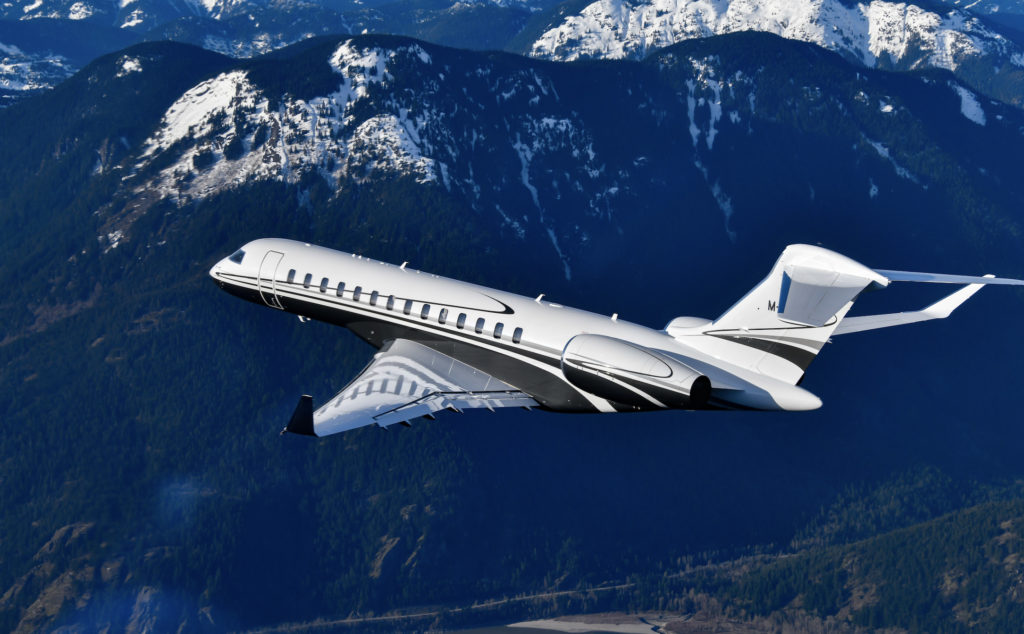Estimated reading time 5 minutes, 42 seconds.
Bombardier has reported strong financial results for 2021. Last June 2, Skies discussed Bombardier’s prospects as a corporate jet manufacturer. We believed that demand for new aircraft, enhanced production efficiencies, and a focused debt reduction program would result in impressive revenue growth, improved earnings, stronger cash flow, and a healthier balance sheet. The results for Q2/21 and Q3/21 confirmed our belief, and now the Q4/21 numbers have proven that the positive trends driving the company’s financial turnaround remain in place.
During 2021’s final quarter, Bombardier’s total revenues declined 24 percent year-over-year to US$1.8 billion from US$2.3 billion. Revenues related to aircraft sales decreased by about 30 percent from US$2.0 billion to US$1.4 billion as a result of “a more evenly distributed delivery profile on the Global 7500.” During that period, Bombardier delivered 38 aircraft, a 14 percent decline from the 44 delivered in the year-earlier quarter. It should be noted that the total number of aircraft delivered during 2021 was 120, as was forecast by management when they issued revised guidance last Aug. 5.

While the Q4/21 revenues were down, the company’s profitability improved markedly. The gross profit increased by 250 percent from US$89 million in Q4/20 to US$313 million in Q4/21. Net income from continuing operations swung US$254 million, from a loss of US$15 million in Q4/20 to a profit of US$239 million in Q4/21. The product mix also contributed to the company’s improved profitability. The gross margin increased to 18 percent in Q4/21 from four percent in the year-earlier period. The higher margins of the Global models were a key factor. Operational efficiencies were assisted by the production cost reduction learning curve on the flagship Global 7500 program. The cost to build the 100th unit was expected to be 20 percent less than that to produce the 50th unit. The 100th is due to be delivered in April.
The enhanced earnings performance enabled free cash flow of US$314 million during the latest quarter. That was an 18 percent improvement over the US$266 million achieved in Q4/20. The improved cash flow, and proceeds from previous divestitures, has enabled a meaningful improvement in the strength of the balance sheet. At the end of 2021, the company’s net debt totaled approximately US$5.4 billion. That is about US$2.9 billion less than where it stood a year earlier. Furthermore, Bombardier does not have any significant debt maturing until December 2024.
The outlook for Bombardier remains encouraging. The order backlog at Dec. 31, 2021, stood at US$12.2 billion, up from the US$11.2 billion at Sept. 30, US$10.7 billion at June 30, and US$10.4 billion at March 31, 2021. The Q4/21 book-to-bill ratio was an impressive 1.6X, reflecting strong sales of new Challenger and Global aircraft. Orders continued to come from both traditional customers and first time buyers.
The Covid-19 pandemic has resulted in a significant increase in interest in private aviation from high-net-worth individuals around the globe, and this has resulted in increased purchases by families that have never owned an aircraft. This has also resulted in a sharp decline in the availability of previously-owned corporate jets.
In such an environment of strong demand, it might be assumed that aircraft production rates will be boosted by Bombardier in the near future. The reality is that such an increase takes time to accomplish, given the lead times required by the myriad suppliers of materials, components, and systems.
Bombardier’s CEO, Eric Martel, has made it clear that the company will be acting in a prudent manner with respect to production rate increases and that the company is monitoring order backlog levels, competitive pricing, and supply chain challenges. With respect to the latter issue, last year Bombardier assigned personnel to oversee their supply chains in order to limit any issues. This has proven to have been an astute move.
Bombardier’s near-term financial performance will likely be driven more by cost savings than by revenue growth. While new aircraft deliveries are expected to increase modestly during 2022, operating efficiencies and reduced interest expenses are expected to be the key contributors to continuing margin improvements.
With an increased order backlog; a burgeoning market; enhanced profitability and cash flow; and the continuing deleveraging of its balance sheet, Bombardier’s financial turnaround continues to be a story worth following.








